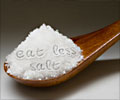Glossary
Adrenal glands: Pair of small glands, one located on top of each kidney. The adrenal glands produce sex hormones and hormones that control heart rate, blood pressure, the way the body uses food and other vital functionsAnti-hypertensive: Reduces blood pressure.
Atherosclerosis: A condition in which lipids and fats are deposited inside the arteries leading to high blood pressure and heart diseases.
Beta blocker: A drug that blocks the beta receptors of the sympathetic nervous system (e.g. -propanolol, metoprolol, atenolol)
Blood pressure: The pressure of the blood on the walls of the arteries. It is dependent on the energy of the heart action, the elasticity of the walls of the arteries and the viscosity of the blood.
Calcium channel blocker: A type of medication which relieves high blood pressure and angina by interrupting the influx of calcium into the muscle of the heart and arteries, which is needed for contraction.
Captopril: A drug used to lower high blood pressure. It belongs to the family of ACE inhibitors.
Coarctation of Aorta: Congenital narrowing of a segment of the aorta that impedes blood flow to the lower part of the body.
Congenital defects: A defect present at birth
Cushing’s syndrome: A condition caused due to abnormal levels of corticosteroids in the body. Weight gain and obesity are the common symptoms associated with it.
Diastolic pressure: The blood pressure measured when the heart is at rest between beats.
Diuretics: Drugs which help in increasing urine output
Echocardiography: A procedure that uses ultrasonic waves over the chest wall to obtain a graphic record of the heart’s position, motion of the walls or internal parts such as the valves
Endocrine system: A regulatory system comprised of the endocrine glands that control vital body functions such as metabolic activity, growth and reproduction.
Pheochromocytoma: A non-cancerous tumor of the cells that produce epinephrine and norepinephrine, causing high levels of these hormones in the blood and an increase in blood pressure.
Systolic blood pressure: The highest blood pressure produced by the contraction of the heart recorded as the first number in your blood pressure measurement.







